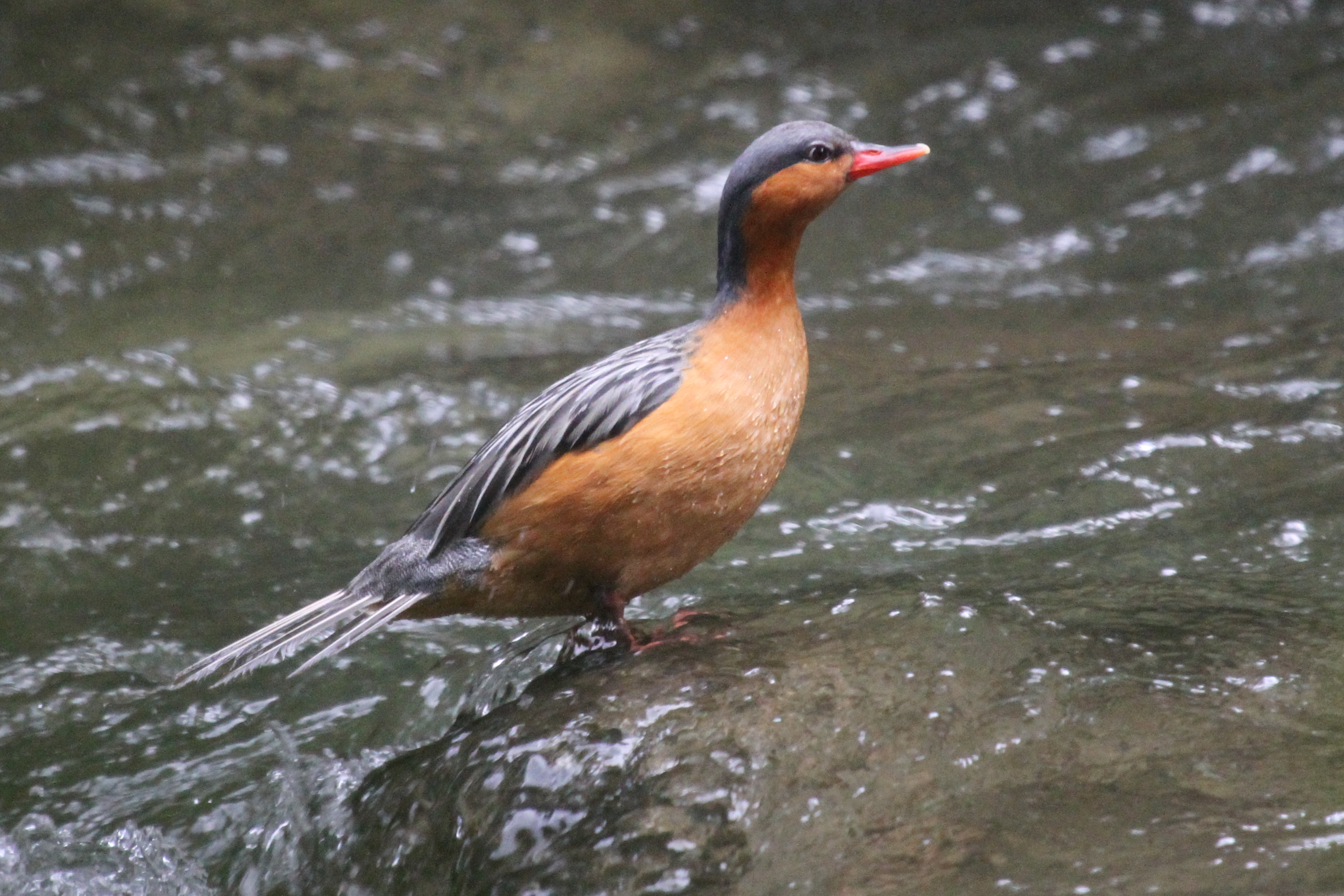
Merganetta armata
SUBFAMILY
Anatinae
TAXONOMY
Merganetta armata Gould, 1842, Andes of Chile. Six subspecies.
OTHER COMMON NAMES
French: Merganette des torrents; German: Sturzbachente;
Spanish: Pato de torrente.
PHYSICAL CHARACTERISTICS
16.9–18.1 in (43–46 cm); 0.69–0.97 lb (315–440 g); slender
bodied.
DISTRIBUTION
M. a. colombiana: Andes of western Venezuela south to southern
Ecuador. M. a. leucogenis: Andes of southern Ecuador south
to northwest Argentina. Merganetta a. armata: Andes of Mendoza,
Argentina, and Atacama, Chile, south to Tierra del
Fuego. Found between 984 and 15,100 ft (300–4,600 m), in
south down to sea level.
HABITAT
Fast-flowing, rocky mountain streams with clear water in
pбramo grasslands and humid montane forest.
BEHAVIOR
Very territorial and aggressive year round.
FEEDING ECOLOGY AND DIET
Feeds on aquatic invertebrates and possibly fish. Forages by
diving, dipping head into water, and upending; searches
crevices among rocks and boulders.
REPRODUCTIVE BIOLOGY
Perennially monogamous. May mate for life. Grassy nest lined
with down can be found in cavities, among rocks, or in dense
vegetation. Breeding season depends on locality. Lays 3–4
eggs; incubation c. 43–44 days.
CONSERVATION STATUS
M. a. colombiana and M. a. leucogenis appear to be declining and
may soon be considered Near Threatened. Main causes for the
decline are deforestation, river siltation, hunting, and mining.
SIGNIFICANCE TO HUMANS
Hunted for food.
Other popular Animals
Photo Gallery of - Torrent duck




 Animalia Life
Animalia Life